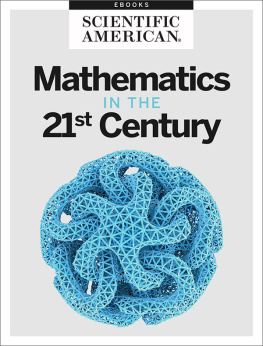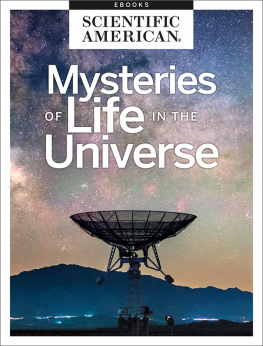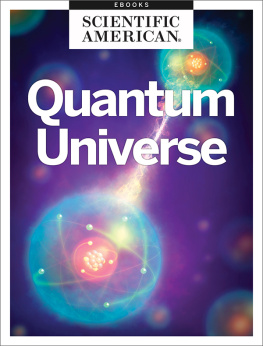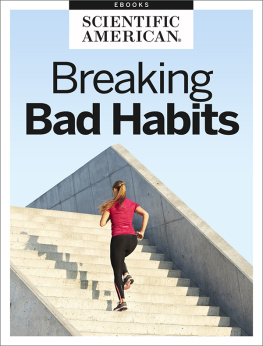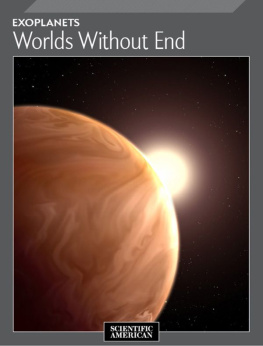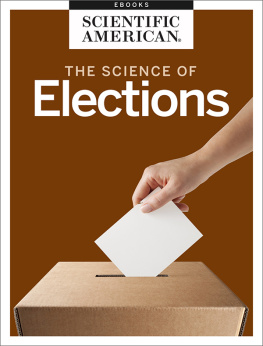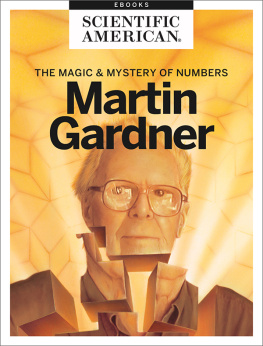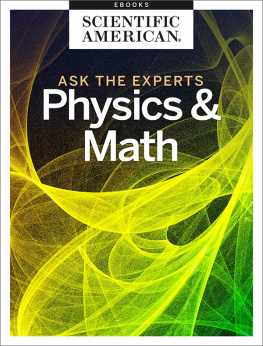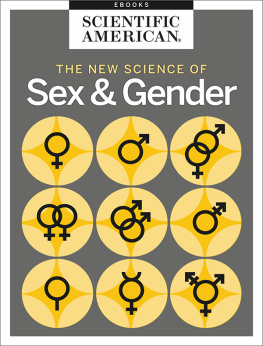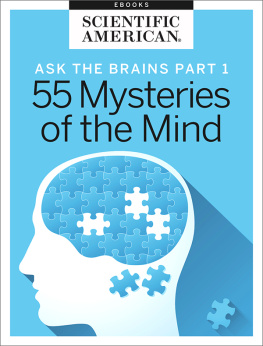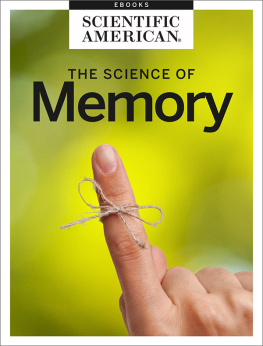Scientific American Editors - Mathematics in the 21st Century
Here you can read online Scientific American Editors - Mathematics in the 21st Century full text of the book (entire story) in english for free. Download pdf and epub, get meaning, cover and reviews about this ebook. year: 2019, publisher: RosenGroup, genre: Romance novel. Description of the work, (preface) as well as reviews are available. Best literature library LitArk.com created for fans of good reading and offers a wide selection of genres:
Romance novel
Science fiction
Adventure
Detective
Science
History
Home and family
Prose
Art
Politics
Computer
Non-fiction
Religion
Business
Children
Humor
Choose a favorite category and find really read worthwhile books. Enjoy immersion in the world of imagination, feel the emotions of the characters or learn something new for yourself, make an fascinating discovery.
- Book:Mathematics in the 21st Century
- Author:
- Publisher:RosenGroup
- Genre:
- Year:2019
- Rating:5 / 5
- Favourites:Add to favourites
- Your mark:
- 100
- 1
- 2
- 3
- 4
- 5
Mathematics in the 21st Century: summary, description and annotation
We offer to read an annotation, description, summary or preface (depends on what the author of the book "Mathematics in the 21st Century" wrote himself). If you haven't found the necessary information about the book — write in the comments, we will try to find it.
Scientific American Editors: author's other books
Who wrote Mathematics in the 21st Century? Find out the surname, the name of the author of the book and a list of all author's works by series.
Mathematics in the 21st Century — read online for free the complete book (whole text) full work
Below is the text of the book, divided by pages. System saving the place of the last page read, allows you to conveniently read the book "Mathematics in the 21st Century" online for free, without having to search again every time where you left off. Put a bookmark, and you can go to the page where you finished reading at any time.
Font size:
Interval:
Bookmark:

Mathematics in the 21st Century
From the Editors of Scientific American
Cover Image: ALFRED PASIEKA/SCIENCE PHOTO LIBRARY/Getty Images
Letters to the Editor
Scientific American
One New York Plaza
Suite 4500
New York, NY 10004-1562
or editors@sciam.com
Copyright 2019 Scientific American, a division of Springer Nature America, Inc.
All rights reserved.
Published by Scientific American
www.scientificamerican.com
ISBN: 978-1-948933-12-4


Mathematics in the 21st Century
From the Editors of Scientific American
Table of Contents
Introductionby Evelyn Lamb
Section 1
1.1
by Stephen Ornes
1.2
by Graham P. Collins
1.3
by Evelyn Lamb
Section 2
2.1
by Heather Wax
2.2
by Derek E Moulton, Alain Goriely and Rgis Chirat
2.3
by Adam J. Kucharski
2.4
by Helen Shen
Section 3
3.1
by Walter Isaacson
3.2
by John C. Baez and John Huerta
3.3
by Dana Mackenzie
3.4
by Matthew von Hippel
Section 4
4.1
by Moon Duchin
4.2
by Jean-Paul Delahaye
4.3
by Stephen Ornes
Section 5
5.1
by Ernest Nagel and James R. Newman
5.2
by Gregory Chaitin
5.3
by Toby S. Cubitt, David Prez-Garca and Michael Wolf
Mathematics Through the Millenia
In 1960, Nobel Prize-winning physicist Eugene Wigner wrote about the unreasonable effectiveness of mathematics to help scientists answer questions in a broad range of disciplines. Sixty years later, that assessment still holds.
Mathematics has changed drastically over the millennia it has been practiced. Until a few hundred years ago, mathematicians usually saw themselves as probing objective truth. Euclids Elements, the influential 3rd-century BCE geometry text, codified what we now call Euclidean or plane geometry. Its axiomsthe starting assumptions on which the rest of the work buildswere chosen to reflect the way objects in the real world behave. Newton developed calculus in order to put his physics on solid ground. The rules of calculus were based on his perceptions of the motion of tangible objects.
Today, however, mathematicians do not necessarily see their axioms as true. They are more interested in the implications given certain axioms, not whether the axioms themselves are valid. Euclidean geometry is what happens with one set of assumptions; hyperbolic geometry, in which straight lines bend away from each other, is just as valid if you start with different assumptions. In some ways, mathematics is a collection of thought experiments, chains of reasoning beginning with assumptions that may or may not hold in any given real context. It is an abstract art form with aesthetic considerations of its own.
It is something of a miracle, then, that mathematics is still such a powerful tool in science, where the goal is to test hypotheses about the real world. But the importance of mathematical modeling and statistical analysis in other sciences continues to grow.
In this collection, we present some of the mathematical gems from the pages of Scientific American since the turn of the millennium. We start with a collection of articles about some of the most important purely mathematical results of the past few decades, the frontiers of the field. In Section 2, we explore the body mathematic: the way mathematical modeling is helping scientists understand biology. Section 3 is about mathematics in service of physics. The two fields have been closely entwined for millennia, and their coevolution continues today. Section 4 is about the role of mathematics in the way human beings relate to each other: politics, art, and of course trying to keep or steal secrets.
Though mathematics has created ever-more-powerful tools for modeling the world and computing with precision, we must also reckon with its limitations. In Section 5, we bring you one article from the deep vaults, a 1956 exploration of Kurt Gdels groundbreaking incompleteness theorems. He showed that there are questions mathematics will never answer, no matter what axioms we choose and how deeply we commit ourselves to studying them. Since then, mathematicians have continued to probe the limitations of the discipline, seeking to define the very boundaries of what humans can know.
--Evelyn Lamb
Book Editor
The Whole Universe Catalog
by Stephen Ornes
A seemingly endless variety of food was sprawled over several tables at the home of Judith L. Baxter and her husband, mathematician StephenD. Smith, in Oak Park, Ill., on a cool Friday evening in September2011. Canaps, homemade meatballs, cheese plates and grilledshrimp on skewers crowded against pastries, pts, olives, salmonwith dill sprigs and feta wrapped in eggplant. Dessert choices includedbut were not limited toa lemon mascarpone cake and an Africanpumpkin cake. The sun set, and champagne flowed, as the 60 guests, about half of themmathematicians, ate and drank and ate some more.
The colossal spread was fitting for a party celebrating amammoth achievement. Four mathematicians at the dinnerSmith, Michael Aschbacher, Richard Lyons and Ronald Solomonhad just published a book, more than 180 years in themaking, that gave a broad overview of the biggest division problemin mathematics history.
Their treatise did not land on any best-seller lists, whichwas understandable, given its title: The Classification of FiniteSimple Groups. But for algebraists, the 350-page tome was amilestone. It was the short version, the CliffsNotes, of this universalclassification. The full proof reaches some 15,000 pagessome say it is closer to 10,000that are scattered across hundredsof journal articles by more than 100 authors. The assertionthat it supports is known, appropriately, as the EnormousTheorem. (The theorem itself is quite simple. It is the proofthat gets gigantic.) The cornucopia at Smiths house seemed anappropriate way to honor this behemoth. The proof is the largestin the history of mathematics.
And now it is in peril. The 2011 work sketches only an outlineof the proof. The unmatched heft of the actual documentationplaces it on the teetering edge of human unmanageability. I dontknow that anyone has read everything, says Solomon, age 66,who studied the proof his entire career. (He retired from OhioState University two years ago.) Solomon and the other threemathematicians honored at the party may be the only peoplealive today who understand the proof, and their advancingyears have everyone worried. Smith is 67, Aschbacher is 71 andLyons is 70. Were all getting old now, and we want to get theseideas down before its too late, Smith says. We could die, or wecould retire, or we could forget.
That loss would be, well, enormous. In a nutshell, the workbrings order to group theory, which is the mathematical studyof symmetry. Research on symmetry, in turn, is critical to scientific areas such as modern particle physics. The Standard Modelthe cornerstone theory that lays out all known particles inexistence, found and yet to be founddepends on the tools ofsymmetry provided by group theory. Big ideas about symmetryat the smallest scales helped physicists figure out the equationsused in experiments that would reveal exotic fundamental particles,such as the quarks that combine to make the more familiarprotons and neutrons.
Font size:
Interval:
Bookmark:
Similar books «Mathematics in the 21st Century»
Look at similar books to Mathematics in the 21st Century. We have selected literature similar in name and meaning in the hope of providing readers with more options to find new, interesting, not yet read works.
Discussion, reviews of the book Mathematics in the 21st Century and just readers' own opinions. Leave your comments, write what you think about the work, its meaning or the main characters. Specify what exactly you liked and what you didn't like, and why you think so.

